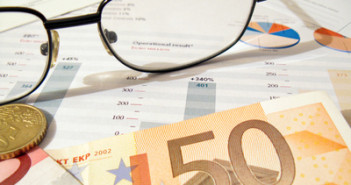The Monday holiday in the US meant a slow start to the week, but the lack of activity ended abruptly on Tuesday, as EUR/USD posted sharp losses. The pair coughed up close to one cent after an excellent consumer confidence reading out of the US. The euro has partially recovered on Wednesday, as the pair trades close to the 1.29 line. In economic news, German Unemployment Change looked awful, jumping to its highest level in four years. It’s a quiet day in the US, with the sole event being a speech by FOMC Member Eric Rosengren.
Here is a quick update on the technical situation, indicators, and market sentiment that moves euro/dollar.
EUR/USD Technical
- Asian session: Euro/dollar settled down after sharp losses earlier in the day. The pair touched a low of 1.2837 and consolidated at 1.2851. In the European session, the pair has moved higher, and is putting pressure on the 1.29 line.
Current range: 1.2890 – 1.2960.
Further levels in both directions:Â 
<img alt=â€EUR USD Daily Forecast May28″ src=â€https://forexcrunch-wpengine.netdna-ssl.com/wp-content/uploads/2013/05/EUR-USD-Daily-Forecast-May28-350×196.png†width=â€350″ height=â€196″ />Â
<img alt=”EUR USD Daily Forecast May27″ src=”https://forexcrunch-wpengine.netdna-ssl.com/wp-content/uploads/2013/05/EUR-USD-Daily-Forecast-May271-350×196.png” width=”350″ height=”196″ />
- Below: 1.2840, 1.2800, 1.2750, 1.27, 1.2624 and 1.2587.
- Above: 1.2890, 1.2960, 1.30, 1.3050, 1.31, 1.3160 and 1.32, 1.3255, and 1.3290.
- On the upside, 1.2890Â is under strong pressure from the pair. 1.2960 is stronger.
- 1.2840 is providing weak support. Next is the round number of 1.2800.
Euro moving higher after sharp losses on Tuesday – click on the graph to enlarge.
- EUR/USD Fundamentals
- All Day: German Preliminary CPI. Exp. 0.2%.
- 7:55 German Unemployment Change. Exp. 4K. Actual 21K.
- 8:00 Eurozone M3 Money Supply. Exp. 29%. Actual 3.2%.
- 8:02 Eurozone Private Loans. Exp. -0.4%. Actual -0.9%.
- 17:00 FOMC Eric Rosengren Speaks.
For more events and lines, see the EUR/USD
EUR/USD Sentiment
- German unemployment numbers sharply up: German employment numbers looked awful on Tuesday, as Unemployment Change shot up to 21 thousand, blowing past the estimate of 4 thousand. This was the highest reading since June 2008. Where is the German economy headed? The markets have been treated to some mixed numbers of late, but last week ended on a high note, as consumer and business confidence numbers looked strong. The weak employment numbers once again raise doubts about the strength of the German economy, and this uncertainty will weigh on the shaky euro.
- US releases on a roll: The markets are used to ups and downs in US numbers, and we continue to see alternating weeks in economic data. This past week was mostly positive, with better than expected new home sales, a record low in continuing claims and a nice rise in durable goods orders on Friday. There was more good news on Tuesday, as CB Consumer Confidence shot up to its highest level since June 2009. As well, the S&P/CS Composite-20 HPI posted a sharp gain, indicating more activity in the US housing market. If this week’s indicators follow suit and point upwards, the US dollar could hop on for the ride and push higher.
- Bernanke comments shake up euro: The euro went on a wild ride late last week, courtesy of US Federal Reserve Chair Bernard Bernanke. He first stated that tightening monetary policy could hurt the economic recovery. The euro reacted by rising sharply, testing the 1.30 level, but this proved to be a short-lived move. Bernanke later said that if US economic data improved, a decision to scale back QE could be taken in the “next few meetingsâ€. This brought the euro back down in a hurry, Although the Fed hasn’t made any changes to the current round of QE, Fed policymakers continue to hint that QE will be scaled back. We can expect the currency markets to be very sensitive to further talk of tapering QE.
- Negative Interest Rates for ECB? Recent comments from the ECB about negative interest rates have affected the euro, and ECB Mario Draghi and other policymakers are open to the idea. On Monday, ECB Executive Board member Joerg Asmussen said that the ECB will continue its expansive monetary policy in order to boost the Eurozone economy, but urged caution on the question of whether to continue reducing rates. The ECB’s deposit rate currently stands at zero. Asmussen said that the ECB can’t simply fix uncompetitive economies with monetary policy, such as the adopting negative interest rates. We can expect a strong debate within the ECB before any moves are taken in this direction.



